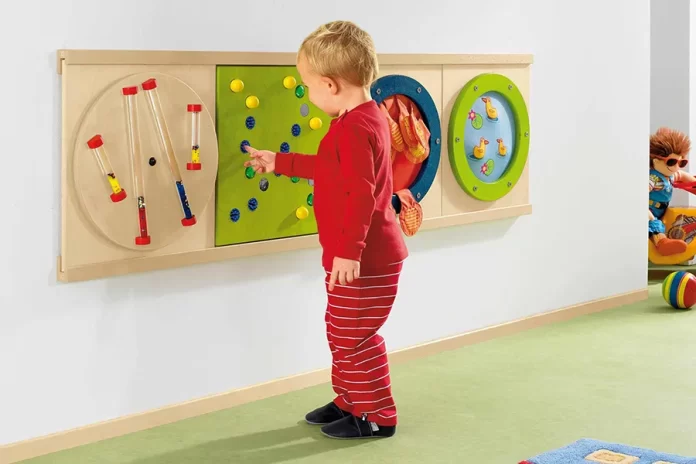In the vast universe of developmental tools and toys, the sensory wall stands out as a beacon for engaging young minds and senses in a journey of exploration and discovery. This unique educational tool is not just a plaything; it’s a portal into the tactile, visual, auditory, and even olfactory experiences that are crucial for childhood development. Let’s dive into what makes sensory walls so magical and how they can transform any space into an interactive learning environment.
Table of Contents
What is a Sensory Wall?
A sensory wall is a specially designed space, often a wall or a panel, that incorporates a variety of textures, objects, and features to stimulate the senses. It’s like a playground for the senses, crafted to provide hands-on experiences that nurture curiosity, enhance fine motor skills, and support cognitive development. These installations can be found in classrooms, therapy centers, public play areas, and even at home, each one uniquely tailored to offer an immersive sensory journey.
The Impact of Sensory Play
Sensory play is the cornerstone of early childhood development. It’s through the manipulation of different materials and the exploration of diverse stimuli that children learn to understand the world around them. Sensory walls offer a concentrated dose of such experiences, making them an invaluable resource. They help children develop critical skills like problem-solving, language acquisition, and emotional regulation. Moreover, sensory walls are particularly beneficial for children with sensory processing disorders, autism, or ADHD, providing a safe and structured environment for them to explore and learn.
Designing a Sensory Wall
Creating a sensory wall is an art in itself, requiring thoughtful consideration of the elements that will best engage and benefit the children who interact with it. A well-designed sensory wall might include features such as textured fabrics, mirrors, interactive puzzles, buttons, zippers, and elements that make sounds. The inclusion of natural materials like wood, stone, and fabrics, alongside colorful and visually stimulating items, can create a rich tapestry of experiences.
Benefits Beyond the Senses
While the primary aim of sensory walls is to engage the senses, their benefits extend much further:
- Emotional Development: Children learn to manage feelings of frustration and excitement, fostering emotional resilience.
- Social Skills: Shared play at a sensory wall encourages interaction, communication, and cooperation among peers.
- Independence: Engaging with a sensory wall can boost confidence and self-esteem as children discover new abilities and navigate challenges.
- Cognitive Growth: Sensory walls stimulate curiosity and investigative skills, laying the foundation for lifelong learning and creativity.
Sensory Walls at Home
Bringing the magic of sensory walls into the home is a wonderful way to create a stimulating learning environment for children. DIY sensory walls can be as simple or complex as you like, tailored to your child’s interests and developmental needs. Whether it’s a small corner of a room or a larger dedicated space, the key is to include a variety of textures, colors, and interactive elements that will captivate and educate.
The sensory wall is more than just an educational toy; it’s a gateway to a world of sensory exploration that supports holistic development in children. By offering a diverse array of sensory experiences, these walls not only entertain but also educate, making them a priceless addition to any space dedicated to child development. Whether in educational settings, therapeutic environments, or the comfort of home, sensory walls provide a unique and enriching experience that benefits children in myriad ways, making them an indispensable tool in the journey of growth and discovery.















